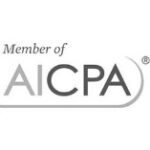When it comes to financial planning for either an individual or business entity, knowing how to project and determine how much you’ll owe in taxes at a future date is an essential component for smart personal and business financial planning. The process can be daunting. It may feel as if you need a crystal ball to manage all the assumptions and unknowns involved in accurately estimating a tax burden. To do the job thoroughly, it’s important to know how best to incorporate current financial data, anticipated income, deductions, credits, the impact of evolving tax laws and projected taxable income.
We at Walters want to offer our readers a short guide with an overview of some of the key issues to think about. First, what is a tax projection? How does this differ from tax planning? Who would most benefit from doing tax projections, and what are those benefits?
Also covered below are some methods for accurate tax projections, as well as the steps involved in creating reliable tax forecasts.
What is a Tax Projection?
A tax projection is a proactive approach that can help an individual or entity (business or non-profit) to estimate their future tax liabilities. How? By considering current financial information, anticipated income, future deductions and credits, and the myriads of tax laws that change over time. By projecting out, this process can help plan for tax obligations ahead rather than reacting to bills as they come. Often, tax projections start with information from the previous year’s tax return and are adjusted for changes in the current year. Tax projections are essential for effective financial planning.
How are Tax Projections Different from Tax Planning?
While tax projections and tax planning are related, they do indeed serve different purposes. Projections focus on estimating what a future tax liability will be. This is based on current and anticipated financial data such as revenues, expenses, credits, deductions, etc. It is the prediction of what taxes will be owed by the person or business entity. Tax projections help set aside money for future taxes owed. Tax planning, on the contrary, involves the strategic actions one can take to legally reduce taxes based on a person’s specific situation, the business’s circumstance, and any applicable regulatory requirements.
Benefits of Tax Projections
While taxes are a given in life, projecting what may be due to state and federal tax authorities is a smart strategy for reducing that burden and for ensuring thorough compliance. Projections help avoid surprises and can significantly improve financial decision-making and long-term stability for an individual or a firm. Additionally, tax projections help set aside money for future taxes owed, ensuring that there are no unexpected financial shortfalls.
Let’s look at some of the specific benefits effective tax projection efforts can impart:
Improved Financial Planning
Understanding future tax liabilities helps businesses (and individuals) make better and more informed decisions about their investments, spending, and savings. Take, for instance, a small business such as a private gym that offers personalized fitness training and wellness services. The owner takes steps to understand his tax liability in the coming year and projects a higher one soon. Armed with such information, he might decide that it makes sense to invest in new equipment in the current year. Why? This could allow him to start taking advantage of depreciation deductions earlier, thus potentially strengthening his long-term financial situation. On a smaller scale, an individual who is anticipating a bigger tax bite to come might choose to maximize retirement contributions in tax-advantaged accounts to lessen the burden. Both are examples of using tax projections to improve financial planning.
Cash Flow Management
Knowing estimated tax payments (again via tax projections) can help with superior cash flow management. Let’s take a retail business such as one that is affected by seasonal spurts and droughts of profits, such as a large landscaping firm that covers multiple towns. This type of business clearly experiences fluctuations in revenue due to seasonality. But, by accurately projecting their tax liabilities, the business can set aside the needed funds during high-revenue times to cover their tax obligations during the leaner and meaner months. Looking at the business more specifically, making such projections will allow it to maintain sufficient liquidity so that it can pay its employees’ wages, manage various inventory purchases, and any other operational expenses that come its way without adding additional financial strain on the company.
Maximizing Tax Savings
It goes without saying that by doing effective (and precise) tax projection planning, businesses can find opportunities to mitigate taxes and save money. For instance, when a consulting firm projects its tax liabilities, it can make investments in certain areas that would garner tax credits (think employee training programs). Not only are they helping the employees (and the business), but by making these types of investments, the consulting firm will reduce its taxable income and can bank the money or reinvest savings to grow the business and/or to consider additional initiatives.
Better Strategic Decision Making
For businesses, tax projections can even offer insights to support better strategic decisions (not just purely financial), such as deciding if a firm should take bold actions when expanding into new markets or conducting M&A (mergers and acquisitions). For example, a mid-cap-sized pharmaceutical company may be considering an acquisition that would vault it into a higher-profile and larger entity. Doing the work and making the projections of the tax implications of such a deal would help management ascertain any potential benefits from the merger’s operational/financial synergies and the subsequent tax efficiencies realized. Recognizing what these impacts are in advance can allow the pharma executives to negotiate superior terms and structure the acquisition to financially benefit them, leading to more favorable outcomes.
Avoiding Penalties
Last, but certainly not least, tax projections help to ensure timely and appropriate tax payments, thus bringing down the risk of underpayment that can lead to penalties and interest. A company or an individual (take a freelancer who must make quarterly tax payments) miscalculates their estimates and then faces significant penalties. These can and must be avoided. Qualified tax accountants can help prevent this and bring about other benefits noted above. Tax professionals, such as CPAs, can provide comprehensive tax planning strategies to further minimize tax liabilities.

Who Needs Tax Projections?
Tax projections are helpful for a wide range of people and businesses. Their specific needs and goals will vary, but it’s a given that most would benefit from this form of financial planning. Business owners, be they small, mid-sized, or larger enterprises, can all gain, whether it’s better managing quarterly tax payment estimations or figuring out future year-end tax liabilities.
High-income and high-net-worth individuals often face complex tax situations and benefit from the advice of qualified tax accountants. While able to use typical tax planning strategies, they can also profit from the knowledge gleaned from tax projections in areas such as retirement contributions as well as certain deductions that reduce taxable incomes like charitable giving. Doing good is not only the right thing but the smart thing.
Investors are another group that surely should know and understand the tax implications of their investment behavior. Tax projections will make them aware of potential capital gains (and loss) implications, how to best understand the timing of asset sales, the benefits of tax-advantaged accounts, and smarter strategic asset allocation.
Retirees. Some people are often under the misguided impression that once you retire (and lose consistent taxable income), smart tax planning isn’t necessary. On the contrary, tax projections can help in planning tax-efficient withdrawals from retirement accounts. This obviously goes into the realm of retirement planning, but also importantly, with individuals now often living in retirement for more than twenty or even thirty years, wealth preservation and even growth of assets is particularly crucial. There are multiple ways a retiree can benefit, such as using tax projections to better make their required minimum distributions and coordinating these mandatory withdrawals with other income source drawdowns to maintain a lower tax bracket while conserving more of their retirement funds.
Methods for Projecting Taxes
Projecting taxes effectively includes several methods. First is historical data analysis. This step considers past financial data to look for patterns that can help in the future tax projection process. It looks at recurring income and expense patterns. As the name suggests, current-year forecasting employs financial data in the current fiscal year so that tax projections are based on current income, expenses, and expected upcoming tax liabilities for the ongoing year. This helps with real-time adjustments to best handle short-term tax planning. Future-year projections consider anticipated changes in income, expenses, and tax laws to estimate tax liabilities for future years, providing a longer-term view that can guide strategic decisions. Finally, comparative analysis involves comparing financial data and tax liabilities with similar businesses (or individuals) to create benchmarks and refining projections; this ensures estimates are real and judged to some sort of standard. By integrating these methods above, businesses and individuals can develop thorough and reliable projections for better financial planning.
Steps for Creating Tax Projections
Gathering Financial Information
Documents such as income statements (both historical and current) will give you a solid overview to understand revenue and expenses. Look at previous tax returns. Reviewing these documents before tax season can help you prepare for accurate tax projections. This deep dive will help you identify patterns.
Estimating Taxable Income
Look at projections of future salaries (based on current trends) and expected changes. Incorporate investment return data. Look at projections of future salaries (based on current trends) and expected changes. Incorporate investment return data. By estimating returns on investments and considering current market conditions and historical performance, this additional source of income can be a crucial factor in making tax projections. And if you’re looking at the projections for a business, look at income in terms of forecasting revenue and expenses, and consider industry trends and overall macroeconomic factors to the best of your ability. Again, a qualified accountant professional can offer real assistance.
And if you’re looking at the projections for a business, look at income in terms of forecasting revenue and expenses, and consider industry trends and overall macroeconomic factors to the best of your ability. Again, a qualified accountant professional can offer real assistance.
Identifying Deductions and Credits
If we’re talking about individual tax projections, deductions are key. Identifying any eligible deductions, such as charitable contributions, mortgage interest, and qualified medical expenses is useful. For businesses, deductions such as basic operating expenses, employee benefits, and depreciation of assets are primary.
Applying Tax Rates and Tax Laws
Looking at the applicable current state and federal tax rates is necessary for producing tax projections. These changes occur often and, again, can best be tracked by professionals with tax law expertise.
Reviewing and Adjusting Projections
Last, and importantly, check for accuracy. Review these projections for consistency and precision with your current and projected financial data and against relevant tax laws. Make the necessary adjustments that will account for any changes in specific financial circumstances, in the laws, and in economic conditions that can arise unexpectedly.
Tax projections are an indispensable tool. And accounting firms that provide these projection services can be trusted advisors for their clients. These are complex financial issues and finding the right help will aid those who need to navigate the tax landscape with confidence.












